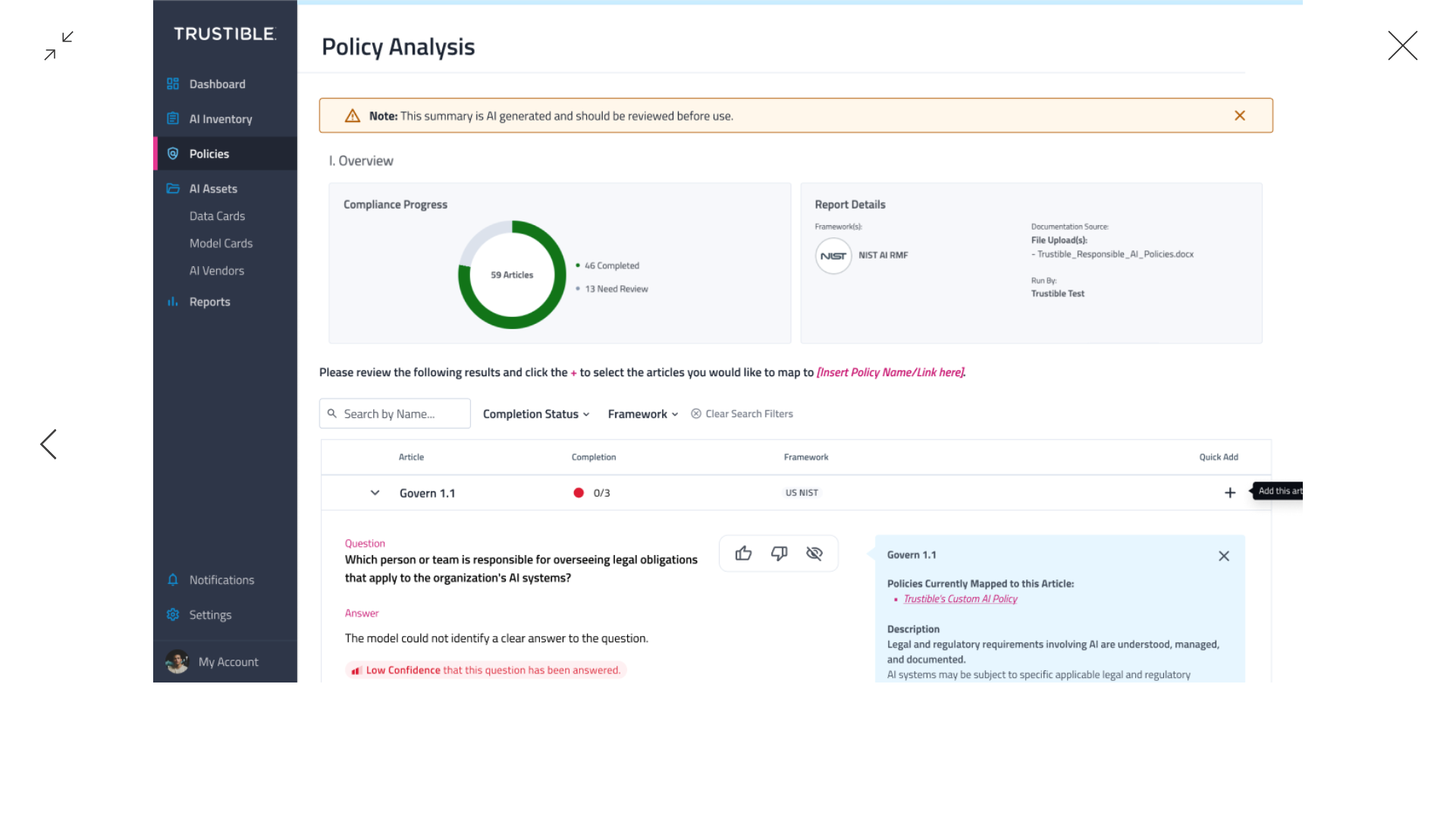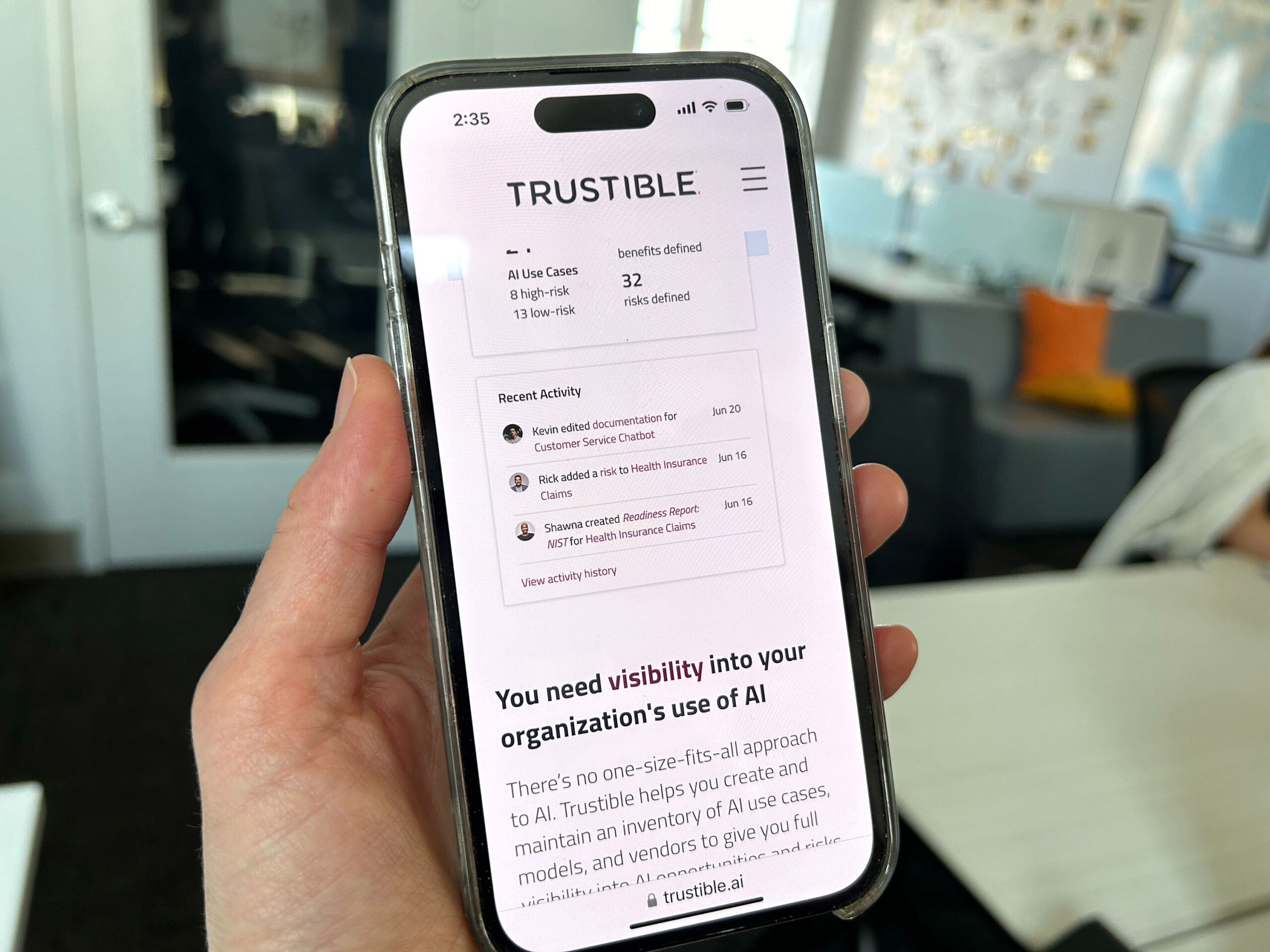Given the evolving lineup of AI regulations and guidelines released in the US and abroad, companies may find it difficult to keep up with all the expectations.
That’s where the AI Policy Analyzer comes in. It’s a new tool launched by Trustible, a Rosslyn, Virginia-based software company and 2024 DC RealLIST Startup specializing in AI governance strategy platforms. The analyzer uses generative AI to evaluate if a company’s policy complies with different standards released across the globe, and aims to do so in a simplified and automated way.
Some prominent examples of these guidelines include the EU AI Act, the National Institute of Standards and Technology’s AI Risk Management Framework and, most recently, the Consumer Protections for Artificial Intelligence bill out of Colorado. That range of international and domestic policies highlights just a few of the many policies companies have to navigate, especially if their work reaches globally.
When using the analyzer, companies can upload an existing AI policy document or choose one of the templates created by Trustible. From there, users can select a specific regulation or guideline. Then, in less than a few minutes, companies will have insight into any gaps in compliance, according to cofounder and chief technology officer Andrew Gamino-Cheong.
“Some of the people we were talking to, they were trying to write their policies … and trying to figure out … what do I need to do to change my policy from where it currently is into one that’s compliant?” Gamino-Cheong said.
“That’s actually one of the hardest tasks,” he added. “[It] requires you to fully understand the policy and fully understand what could be multiple different requirements coming out of multiple different frameworks.”

The team at Trustible has been experimenting with this tool and question-and-answer features for a while, Gamino-Cheong said. However, once the EU AI Act and other standards were released to the public, the value of creating a tool like the analyzer became clear.
These regulations, often hundreds of pages long, are difficult for the average person to understand and sort through, he said.
“Our analyzer actually asks over 100 questions to your policy, checks for that conformity. And so that’s just when the value of this really exploded the most for a lot of customers,” he said.
The CTO said that the overall goal of this new product is to save time and money. Companies will often turn to lawyers to draft and update AI policies. But it’ll take hours for an attorney to sort through all of the different policies and cost the company a lot of cash.
Also, because standards are evolving so quickly and being drafted by so many different entities, it can be hard for a law firm’s senior associate, or even a partner, to understand the nuance, he added.
Gamino-Cheong stressed that he and his team are open to feedback on the new tool. Users can mark answers from the analyzer as “good” or “bad,” and certain sections as irrelevant depending on the company’s functions using AI.
Trustible’s customers are mainly large companies both in the US and internationally. In terms of pricing, Trustible is currently customizing that for each organization.
The analyst does not fully guarantee a company’s compliance with different standards. It moreso offers a way for companies to find gaps, Gamino-Cheong said.
“There’s a lot we can actually do to help orgs basically stay on top of what we call the external complexity for AI governance,” he said. “There’s a lot of new regulations, best practices, incidents happening that all give you more information about your risk profiles. And, essentially, this is our way of trying to automate and scale their ability to stay on top of that external complexity.”







